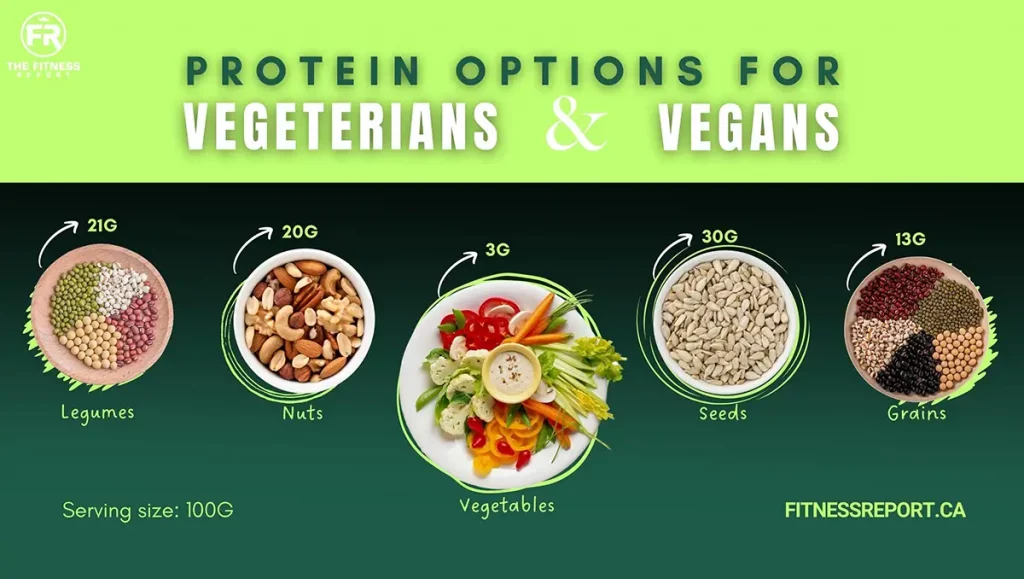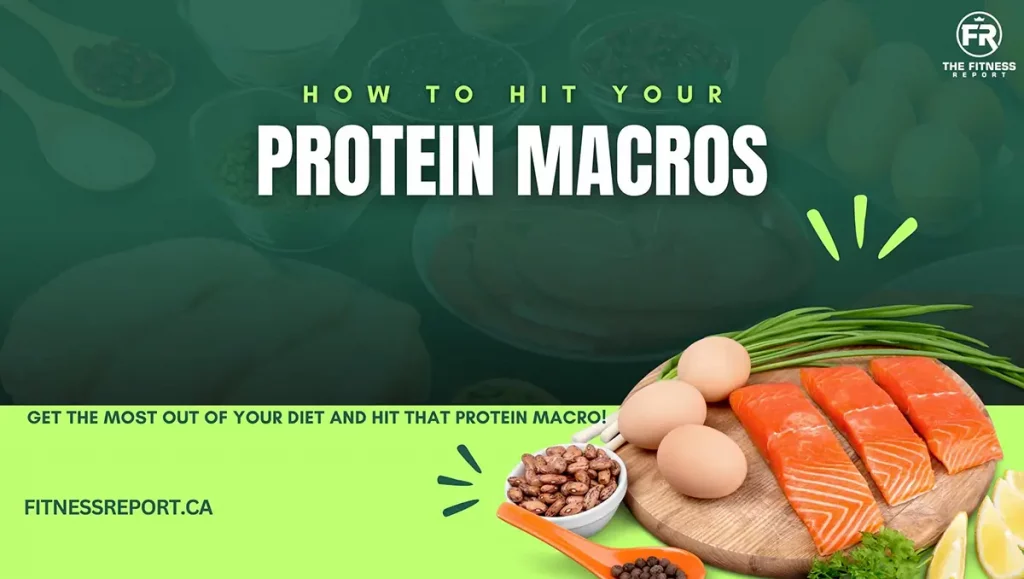How To Hit Your Protein Macros? (The #1 Most Important Macro)
- Why Is It Important To Hit Your Protein Macro?
- First Off, How Much Protein Do I Need?
- Secondly, Are You Eating Enough Protein?
- What Happens If I Don't Hit My Protein Macros?
- How To Get 200 Grams Of Protein Per Day?
- Protein Options For Vegetarians & Vegans
- How To Hit Your Protein Macros – Frequently Asked Questions (FAQs)
Protein is often considered the most important macronutrient for anyone looking to build muscle and lose fat. When we talk about hitting your macros, protein should always be front and center. Protein is the building block of muscle, so getting enough is essential to ensure you’re giving your body what it needs to reach your goals. The good news is that hitting your protein macros isn’t as difficult as it sounds, so let’s dive into what you need to know to get started.
Why Is It Important To Hit Your Protein Macro?
Protein is essential for your body’s growth and repair. It is the key macronutrient that helps with muscle building and muscle tissue recovery, which can help you reach fitness goals faster and more effectively. Protein also plays a role in maintaining healthy bones, organs, skin, hair, and nails.
In addition, protein helps to balance blood sugar levels and provides the energy needed for daily activities. Therefore, it is important to hit your protein macro to reap all these benefits. Eating the right amount of protein will ensure you get enough of this nutrient without overeating or missing any essential nutrients from other food groups, such as carbohydrates and fats.
A balanced diet high in quality proteins like lean meats, eggs, legumes, nuts, and low-fat dairy, along with complex carbohydrates and unsaturated fats, is the best way to meet your daily protein requirements.
With proper nutrition and a healthy diet, you can easily hit your protein macros and maximize all of the benefits this essential macronutrient offers. By hitting your protein macro, you can ensure that you get enough of this essential nutrient to keep your body functioning optimally. Get the most out of your diet and hit that protein macro!
First Off, How Much Protein Do I Need?

The amount of protein you need is highly individual and depends on factors like age, activity level, and health goals. Generally speaking, the daily recommendation for protein intake is 0.8-1g per pound of body weight. If you weigh 150 pounds, you should aim for 120-150g of protein a day.
The timing of your protein intake is also important for optimizing muscle growth and recovery. Aim to consume 20-40 g of high-quality protein with each meal. Research shows that spreading your daily protein intake throughout the day helps support muscle synthesis and repair.
In addition, consuming some form of protein prior to exercise can help provide energy and protect against muscle breakdown during high-intensity activities. The bottom line is that no single approach works best for everyone, so it’s important to experiment with different strategies and find what works best for you.
With proper planning, you can develop a healthy eating plan that ensures you’re getting enough protein while still meeting all your other nutrient needs. Finally, it’s important to note that getting enough protein can help you reach your health and fitness goals. Eating a variety of nutrient-dense foods, such as lean meats, fish, eggs, and legumes, is an effective way to ensure you’re getting the protein your body needs.
Additionally, adding a protein supplement, such as whey or plant-based protein powders, can help you hit your daily target. By following these guidelines, you can be sure you’re getting enough protein to support your health and fitness goals.
Secondly, Are You Eating Enough Protein?
It is important to track your daily protein intake to ensure you are getting enough. Tracking your protein intake helps you understand how much you need and can help you make the necessary adjustments to stay within a healthy range. You should aim for adequate protein in each meal or consider supplementing with high-quality whey or plant-based proteins if needed.
Tracking your protein intake also allows you to better understand the types of proteins that are best for your body and lifestyle, like grass-fed beef, organic chicken, wild-caught fish, legumes, and nuts. With proper tracking and a balanced diet, you can rest assured that all the macronutrients (carbohydrates, protein, and fat) work together to help your body perform its best.
In short, properly tracking your daily protein intake is essential for maintaining a healthy balance of macronutrients in your diet. Once you understand how much you need, it becomes easier to make adjustments when necessary and feel more confident that you are getting the right amount for optimal health and performance.
What Happens If I Don’t Hit My Protein Macros?
It is important to emphasize that if you don’t hit your protein macros for a day or two, there is no need to panic. However, if you find yourself unable to reach your goals over a longer period, it might be time to review your diet and make adjustments where necessary.
Supplementation with high-quality protein sources such as whey protein can be a great way to ensure you get enough of this essential macro. Taking the time to learn about your body’s specific nutritional needs and adapting your diet accordingly can go a long way in helping you reach your fitness goals.
So overall, missing protein macros one day or two is not a big deal but consistently not hitting can lead to not achieving your goals. It is important to review your diet and make necessary adjustments if you are not reaching your goal regularly. Supplementation can be an effective tool for ensuring adequate intake of protein, as well as other essential nutrients for overall health and well-being.
How To Get 200 Grams Of Protein Per Day?

It’s important to ensure that you’re getting enough protein in your diet, and having a plan is best so here is a guideline on how you can get 200 g of protein in on a single day. Most people do not need this much protein (unless your a bodybuilder) but follow this and you will get your needed amount.
Protein Breakfast Options
One great way to start your day is with a high-protein breakfast. You could have oatmeal topped with nuts or nut butter, an egg scramble with vegetables like bell peppers or spinach, or Greek yogurt with berries.
Protein Lunch Options
For lunchtime meals, try grilled chicken breast, chicken sausage, or salmon with sides like roasted vegetables or a salad, a turkey avocado wrap with lettuce and tomatoes, or a quinoa bowl with beans, vegetables, and nuts.
Protein Dinner Options
Dinner is an important part of your day for protein intake as well. Fill on lean proteins such as beef, pork, chicken, or fish deli meat. Serve these items with brown rice, quinoa, or sweet potatoes to round out the meal. You can also try vegetarian options such as tofu stir-fry and lentil dishes.
Protein Snack Options
Snacks are also key when it comes to hitting your daily protein goals. Good snack choices include Greek yogurt with granola or berries, hard-boiled eggs, protein shakes, nuts or nut butter, and veggie sticks with hummus. By adding these options to your diet plan, you’ll easily reach the recommended 200 grams of daily protein.
With a little planning and creativity, getting enough protein in your diet doesn’t have to be hard. In addition to helping you reach your health and fitness goals, it can also help to improve your overall energy levels and mental clarity. So, get creative with your meal planning and enjoy the benefits of a protein-rich diet.
Protein Options For Vegetarians & Vegans

You need to take a lot of dietary protein as a vegetarian or vegan to maintain optimal health and wellness. Eating a variety of plant-based proteins can provide the essential amino acids needed for physiological functions while offering various other health benefits.
For vegetarians and vegans, getting enough dietary protein can be a challenge. Fortunately, there are many plant-based sources of protein that provide all the essential amino acids needed for optimal health. Legumes, nuts, seeds, grains, and vegetables are excellent vegetarian protein sources. Here is a list of some options to consider:
- Legumes
Beans, lentils, and peas are versatile legumes packed with fiber and protein. Black beans have about 15 grams of protein per cup, while split peas provide 16 grams per cooked cup.
- Nuts
Almonds, pistachios, walnuts, and cashews offer high levels of healthy monounsaturated fats and protein. An ounce of nuts contains 6-7 grams of protein.
- Seeds
These tiny powerhouses are loaded with essential nutrients and provide between 4 and 8 grams of protein per ounce. Pumpkin, squash, sesame, sunflower, and chia seeds all make great additions to salads, smoothies, or oatmeal dishes.
- Grains
Oats, quinoa, amaranth, and buckwheat are nutrient-dense whole-grain choices that contain 8–11 grams of protein per cooked cup. They can be eaten alone as hot cereal or added to soups and stews for texture and flavor.
- Vegetables
Veggies like spinach, broccoli, and Brussels sprouts may not boast the highest protein content per serving, but they still provide a substantial amount of fiber, vitamins, and minerals. One cup of cooked spinach contains 5 grams of protein, while 1 cup of chopped broccoli contains 4.5 grams.
By choosing from these vegetarian-friendly protein sources, you can ensure that your diet meets your daily needs for optimal health and wellness. Additionally, combining certain plant proteins (like legumes with grains) can create complete proteins to provide all the essential amino acids needed for the body’s physiological functions.
With these options in mind, there are plenty of delicious ways to ensure you get enough dietary protein as a vegetarian or vegan! Combining different plant proteins can also create complete proteins that provide necessary amino acids. By choosing from these vegetarian-friendly protein sources, you can ensure that your diet meets your daily needs for optimal health and wellness!
Conclusion
The importance of getting enough protein in your diet cannot be overstated, as it plays a vital role in maintaining optimal health and wellness. Whether you are vegan or vegetarian, hitting your protein macros does not have to be difficult.
By incorporating a variety of plant-based proteins like legumes, nuts, seeds, grains, and vegetables into your meals and snacks, you can ensure that your protein needs are met while reaping the additional nutritional benefits of these foods.
With a little planning, getting enough dietary protein as a vegan or vegetarian is entirely achievable! Eating the right combination of plant-based proteins can easily hit all your protein macros and stay healthy. So, incorporate some of the foods listed above into your meals and snacks to ensure you get the protein you need!
How To Hit Your Protein Macros – Frequently Asked Questions (FAQs)


